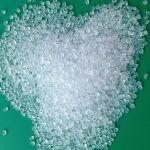Category: HDPE LDPE Polyethylene
What is the difference between LDPE and PE?

LDPE vs. PE: Understanding the Key Differences in Properties and Applications Polyethylene (PE) is a versatile plastic material with a wide range of applications. However, there are different types of PE, each with its own unique properties and uses. Two common types are low-density polyethylene (LDPE) and polyethylene (PE). 1.Properties LDPE is characterized by its low density, flexibility, and toughness. It has a high degree of crystallinity, which gives it a waxy appearance and makes it resistant to chemicals andRead More …
Differences of LDPE, HDPE, and LLDPE
Polyethylene is one of the five major synthetic resins, and China is currently the importer and the second largest consumer of polyethylene. Polyethylene is mainly divided into high density polyethylene (HDPE), low density polyethylene (LDPE), linear low density polyethylene (LLDPE) three categories. Comparison of properties of HDPE, LDPE and LLDPE materials High-density Polyethylene HDPE is non-toxic, tasteless, odorless, and has a density of 0.940 ~ 0.976g/cm3, which is the product of polymerization under low pressure conditions under the catalysis ofRead More …
What is PE Powder Coating and its life expectancy?
What is PE powder coating? PE powder coating refers to a type of powder coating made of polyethylene resin. It has the following characteristics: Good corrosion resistance: Can provide good protection for the coated object. Good impact resistance: Has certain toughness and durability. Good weather resistance: Can resist the effect of sunlight, rain, and other weather conditions. Good electrical insulation properties: Can meet the electrical insulation requirements of some products. Easy to apply: Can be applied by various powder coatingRead More …
Difference Between PP Plastic and PE Plastic

PP and PE are two commonly used plastic materials, but they differ significantly in their applications. The following section will outline the distinctions between these two materials. Chemical Name Polypropylene Polyethylene Structure No Branching Chain Structure Branched Chain Structure Density 0.89-0.91g/Cm³ 0.93-0.97g/Cm³ Melting Point 160-170℃ 120-135℃ Heat Resistance Good High Temperature Resistance, Can Withstand More Than 100℃ High Temperature High Temperature Resistance Is Relatively Poor, Usually Can Only Withstand 70-80℃ High Temperature Flexibility High Hardness, But Poor Flexibility Good Flexibility,Read More …
Difference Between LLDPE and LDPE

Difference between linear low density polyethylene (LLDPE) and low density polyethylene (LDPE) 1. Definition Linear low density polyethylene (LLDPE) and low density polyethylene (LDPE) are both plastic materials derived from ethylene as the primary raw material. However, they differ in terms of structure; LLDPE is prepared using a single catalyst technology, resulting in a linear structure and higher density, whereas LDPE possesses an irregular chain structure with lower density. 2. Physical properties LLDPE exhibits distinct differences in terms of densityRead More …
Distinguishing High density polyethylene (HDPE) from LDPE
High density polyethylene (HDPE) and low density polyethylene (LDPE) are two types of polyethylene polymers with distinct properties. Here are the key differences between them: 1. Molecular Structure: HDPE has a linear structure with minimal branching, resulting in a high density and crystallinity. LDPE, on the other hand, has a highly branched and irregular structure, leading to a lower density and less crystallinity. 2. Density: As the name suggests, High density polyethylene (HDPE) has a higher density compared to lowRead More …
What is high density polyethylene plastic?
High-density polyethylene (HDPE) is a type of plastic characterized by its high strength-to-density ratio. It is commonly used in various applications due to its excellent chemical resistance, durability, and versatility. HDPE is produced through the polymerization of ethylene monomers, resulting in a linear polymer chain with a high degree of crystallinity. HDPE is known for its high density, which gives it superior strength and rigidity compared to other types of polyethylene. It has a density ranging from 0.93 to 0.97Read More …
Is polyethylene plastic?
Yes, polyethylene is a type of plastic. It is a polymer that is widely used in various industries due to its unique properties and versatility. Polyethylene is a lightweight, durable, and flexible material that can be easily molded into different shapes and forms. Polyethylene is made from the polymerization of ethylene monomers. Ethylene is a hydrocarbon gas that is derived from natural gas or petroleum. Through a process called polymerization, ethylene molecules are chemically bonded together to form long chainsRead More …
